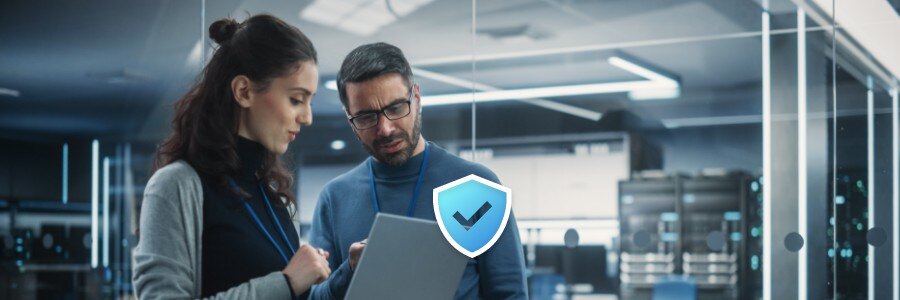Why MFA is Crucial for Personal and Business Security

The Basics of Multi-Factor Authentication
Multi-Factor Authentication (MFA) is a cybersecurity measure that requires users to provide multiple forms of identification before accessing an account or system. Typically, these identifiers fall into three categories: something you know (like a password), something you have (like a smartphone or hardware token), and something you are (like a fingerprint or facial recognition). By combining two or more of these factors, MFA significantly increases the difficulty for unauthorized users to gain access.
In the context of Cybersecurity Awareness Month, it’s essential to understand why MFA is not just a buzzword but a critical component of modern security protocols. The days when a simple password could provide sufficient protection are long gone. With cyber threats becoming more sophisticated, a layered security approach like MFA is indispensable.
How MFA Protects Sensitive Information
The primary goal of MFA is to protect sensitive information from unauthorized access. In an era where data breaches are commonplace, securing personal and business information has never been more important. Even if a cybercriminal manages to obtain your password through phishing or other means, the additional authentication steps required by MFA serve as a robust second line of defense.
For individuals, MFA can safeguard personal information such as banking details, medical records, and social media accounts. For businesses, the stakes are even higher. Intellectual property, customer data, and internal communications are just a few examples of the types of sensitive information that need protection. Implementing MFA ensures that even if one layer of security is compromised, additional layers prevent unauthorized access, thereby protecting valuable data.
Mitigating Cyber Attacks with MFA
MFA is an effective tool for mitigating various types of cyber attacks. One of the most common attacks is phishing, where hackers trick individuals into providing their login credentials. Even if a phishing attempt is successful in capturing a password, MFA adds an additional barrier that the attacker must bypass, often rendering the stolen password useless.
Another prevalent threat is brute-force attacks, where attackers use automated tools to guess passwords. MFA can thwart these efforts by requiring a second form of authentication that is not susceptible to automated guessing. Additionally, MFA provides a layer of security against man-in-the-middle attacks, where attackers intercept communication between the user and the system. By requiring multiple forms of verification, MFA makes it exponentially more difficult for attackers to gain unauthorized access.
MFA Solutions for Individuals
For individuals looking to enhance their security, there are several MFA solutions available. Many popular online services, including Google, Facebook, and Twitter, offer MFA options. These typically involve sending a one-time code to your smartphone or email, which you must enter along with your password. Biometric options, such as fingerprint or facial recognition, are also becoming increasingly common and provide an added layer of convenience and security.
For those who want to go a step further, hardware tokens like YubiKey offer a physical form of authentication that is nearly impossible to replicate. These tokens generate a unique code each time you log in, ensuring that even if your password is compromised, unauthorized access remains unlikely. Setting up MFA on your accounts may require a few extra steps, but the enhanced security is well worth the effort.
MFA Strategies for Businesses
For businesses, implementing MFA is not just a recommendation but a necessity. The first step is to identify which systems and data require the highest level of protection. Once identified, MFA should be implemented across all critical systems. Businesses can choose from various MFA methods, such as SMS-based authentication, mobile apps, hardware tokens, and biometric verification.
It's also crucial to educate employees about the importance of MFA and how to use it effectively. Cybersecurity training sessions can help employees understand the risks associated with weak security practices and the benefits of using MFA. Additionally, businesses should consider integrating MFA with Single Sign-On (SSO) solutions, allowing employees to access multiple systems with one set of credentials while maintaining strong security protocols.
Implementing MFA: Best Practices and Tips
Implementing MFA effectively requires careful planning and execution. Here are some best practices and tips to ensure a smooth implementation:
- Start with Critical Systems: Implement MFA on systems that hold the most sensitive information first, such as email accounts, financial systems, and customer databases.
- Use Strong Authentication Methods: Opt for authentication methods that provide a high level of security, such as hardware tokens or biometric verification.
- Educate and Train: Ensure that all users understand the importance of MFA and how to use it correctly. Regular training sessions can help keep security top of mind.
- Monitor and Review: Continuously monitor the effectiveness of your MFA implementation and review your security policies periodically to adapt to new threats.
- Backup and Recovery Options: Have backup options in place for MFA methods. For example, if a user loses access to their smartphone, they should have an alternative way to authenticate.
By following these best practices, both individuals and businesses can significantly enhance their security posture and protect against a wide range of cyber threats. As we observe Cybersecurity Awareness Month, there's no better time to implement and advocate for robust security measures like Multi-Factor Authentication.
In conclusion, Multi-Factor Authentication is a vital security measure for both individuals and businesses. By adding multiple layers of verification, MFA significantly reduces the risk of unauthorized access and protects sensitive information from cyber threats. As cyber attacks become more sophisticated, adopting MFA is a crucial step in ensuring comprehensive security.
-1.png?width=470&height=77&name=RJ2T%20Horizontal%20Header%20Graphic%20470x77%20-%20Orange%20(1)-1.png)

